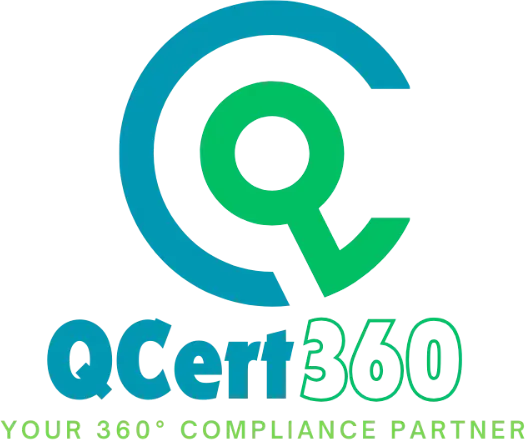
When organizations talk about sustainability, they often think of reducing waste or switching to renewable energy. But here’s the thing—sustainability and profitability are deeply connected. Energy management sits right at the intersection of both. That’s where ISO 50001 energy efficiency certification comes in. It’s not just another compliance standard; it’s a structured framework that helps businesses cut energy costs, improve efficiency, and reduce their environmental footprint.
This guide will break down the environmental and financial benefits of ISO 50001, highlight best practices for implementation, address common challenges, and demonstrate how certification can future-proof your operations.a
What is ISO 50001?
ISO 50001 is the international standard for Energy Management Systems (EnMS), developed by the International Organization for Standardization. It provides organizations with a practical roadmap for improving energy use, regardless of industry. Whether you operate in manufacturing, real estate, logistics, healthcare, or IT, energy costs often form a significant portion of operational expenses.
This standard helps organizations:
- Systematically identify energy-saving opportunities
- Implement efficient energy practices
- Measure and monitor improvements
- Continuously optimize energy performance
Think of ISO 50001 certification as a continuous improvement loop for energy performance—cutting waste, lowering emissions, and saving money simultaneously. It works across industries, enabling companies to align with global energy efficiency goals and strengthen operational resilience.
Environmental Benefits of ISO 50001 certification
Implementing ISO 50001 delivers measurable environmental benefits that go far beyond compliance:
- Reduced Carbon Footprint
One of the most significant impacts is the reduction of greenhouse gas emissions. By optimizing energy usage and transitioning to cleaner energy sources, organizations directly reduce their environmental impact. This is especially important in regions with strict environmental regulations, where compliance can influence market access.
- Alignment with Global Climate Goals
ISO 50001 is a globally recognized standard. Organizations adopting it align with international climate goals, enhancing credibility with stakeholders. Companies that implement ISO 50001 demonstrate carbon footprint reduction through ISO 50001, which appeals to investors and partners focused on sustainability.
- Efficient Use of Resources
From optimizing building heating and cooling systems to improving production line efficiency and reducing reliance on fossil fuels, ISO 50001 encourages smarter resource use. This contributes to reduced waste, lower emissions, and a more responsible operational footprint.
- Better Sustainability Reporting
Investors and regulators increasingly demand transparency on environmental performance. ISO 50001 provides reliable, verifiable energy performance data, making ESG reporting easier and more credible.
Financial Benefits of ISO 50001 certification
ISO 50001 isn’t just about sustainability—it drives cost savings with ISO 50001 and boosts competitiveness.
- Direct Cost Savings
Energy efficiency directly reduces operational costs. Many mid-sized organizations report savings of 10–15% on annual energy bills within a few years of implementation. Quick payback periods make energy management projects financially attractive.
- Improved Competitiveness
ISO 50001 certification demonstrates commitment to sustainability, providing a competitive advantage with energy certification in public tenders and private contracts. Buyers and clients increasingly prefer suppliers with certified energy management practices.
- Reduced Risk of Energy Price Fluctuations
By cutting overall consumption and integrating renewable energy where possible, businesses shield themselves from volatile energy prices. This protects margins and reduces financial exposure.
- Access to Incentives
In several regions, including Europe, South Africa, and the UAE, governments provide grants, tax breaks, or funding support to organizations achieving ISO 50001 certification. These incentives can offset implementation costs and accelerate ROI.
- Long-Term Operational Efficiency
ISO 50001 embeds energy-saving practices into day-to-day operations. Continuous monitoring and improvement lead to ongoing cost reductions, providing long-term operational savings from ISO 50001.
Best Practices for Implementing ISO 50001
Successfully implementing ISO 50001 requires planning, engagement, and structured execution:
- Start with a Clear Energy Baseline
Conduct a thorough energy audit to establish usage patterns, peak loads, and energy costs. - Engage Leadership and Staff
Energy management is both technical and cultural. Leadership commitment and employee awareness campaigns are critical. - Set Realistic Targets
Establish achievable goals, such as reducing energy consumption by 10% in two years or sourcing a percentage of energy from renewables. - Integrate with Other ISO Standards
ISO 50001 works seamlessly alongside ISO 9001 and ISO 14001, creating a unified management system that avoids duplication of effort. - Use Technology to Track Performance
Smart meters, IoT devices, and analytics tools provide real-time insights into energy consumption, helping organizations identify improvement opportunities. - Review and Improve Continuously
ISO 50001 is a continuous improvement process. Regular monitoring, audits, and updates ensure sustained performance.
Common Challenges in ISO 50001 Implementation
While the benefits are clear, organizations may face challenges:
- Initial Investment Concerns
Upfront costs for audits, training, or equipment upgrades may cause hesitation. Viewing ISO 50001 as an investment with measurable returns helps overcome this barrier. - Lack of Internal Expertise
Many companies do not have dedicated energy management specialists. Partnering with experts like Qcert360 ISO 50001 consulting company ensures guidance and smooth implementation. - Resistance to Change
Employees may perceive energy-saving measures as extra work. Awareness programs and communication help build buy-in. - Integration with Existing Systems
Organizations managing multiple ISO standards may fear duplication. Developing an integrated system that leverages shared documentation ensures efficiency.
Real-World Case Study
A logistics company in South Africa faced rising fuel and electricity costs, which were impacting margins. By adopting ISO 50001, they:
- Conducted a comprehensive energy review
- Optimized warehouse cooling systems, vehicle routes, and lighting
- Implemented staff training for energy awareness
Within 18 months, the company:
- Reduced overall energy costs by 12%
- Significantly cut carbon emissions
- Improved competitiveness for government contracts that prioritize sustainable suppliers
This demonstrates how ISO 50001 delivers both environmental and financial benefits in a tangible, measurable way.
Why ISO 50001 is a Win-Win
ISO 50001 is not a choice between environmental responsibility and profitability—it’s about doing both. Organizations gain:
- Compliance with global energy and climate standards
- International recognition for ISO 50001 certification
- Measurable energy savings and long-term operational savings from ISO 50001
- Enhanced brand reputation and market positioning
Certification experts like Qcert360 guide organizations through every stage, from energy review to final certification, ensuring practical, cost-effective solutions for companies of all sizes.
FAQs on ISO 50001
- Is ISO 50001 mandatory for all organizations?
No, it is voluntary, but many regions encourage it through incentives and tender requirements. - How long does it take to implement ISO 50001 standard?
Typically 6–12 months, depending on operational complexity. - Can small businesses benefit from ISO 50001 certification?
Yes, SMEs often see faster returns because energy costs are a higher proportion of expenses. - How does ISO 50001 link to ISO 14001?
ISO 50001 focuses on energy, while ISO 14001 covers overall environmental management. Together, they complement each other. - Do we need new equipment for ISO 50001 compliance?
Not always. Optimizing existing processes often yields significant savings before equipment upgrades. - Will ISO 50001 help with ESG reporting?
Yes, it provides reliable energy performance data supporting ESG disclosures. - What are the ISO 50001 certification costs?
Costs vary by business size and region, but energy savings usually offset them quickly. - Can ISO 50001 be applied outside manufacturing?
Absolutely—applicable across logistics, IT, healthcare, and real estate. - How often is ISO 50001 surveillance conducted?
Annual audits are standard, with full recertification every three years. - What role does top management play in ISO 50001 certification?
Leadership drives energy policy, allocates resources, and promotes a cultural shift toward efficiency.


